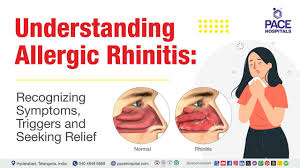Exercise-induced rhinitis is a condition that affects some people when they exercise. It causes symptoms like a runny nose, sneezing, and nasal congestion. While it might sound unusual, many people experience these symptoms during or after physical activity. Understanding exercise-induced rhinitis can help you manage it better and enjoy your workouts without discomfort.
What Is Exercise-Induced Rhinitis?
Exercise-induced rhinitis is when your nose becomes inflamed and produces more mucus during or after exercise. This can lead to symptoms similar to those of a common cold or allergy, such as sneezing, a runny nose, or a stuffy feeling. Unlike allergies, which are triggered by specific substances like pollen or dust, exercise-induced rhinitis happens due to physical activity.
When you exercise, especially in cold or dry environments, your body reacts by increasing mucus production to protect and moisten your nasal passages. This reaction can sometimes lead to rhinitis symptoms, which can be annoying but are usually not serious.
Causes of Exercise-Induced Rhinitis
Several factors can cause exercise-induced rhinitis. Understanding these causes can help you figure out how to manage and reduce your symptoms:
- Temperature Changes: Exercising in cold or dry air can irritate your nasal passages. When you breathe in cold air, it can dry out and inflame the inside of your nose, leading to increased mucus production.
- Increased Airflow: During exercise, you breathe faster and deeper. This increased airflow can carry more particles into your nose, causing irritation and a runny nose.
- Exercise Intensity: High-intensity workouts or prolonged physical activity can sometimes trigger rhinitis symptoms. The harder you exercise, the more your body might react with increased mucus production.
- Allergic Reactions: Sometimes, exercise-induced rhinitis can be a combination of physical activity and underlying allergies. For example, if you’re allergic to dust or pollen, exercising might worsen your symptoms.
Symptoms of Exercise-Induced Rhinitis
Recognizing the symptoms of exercise-induced rhinitis is important for managing the condition. Common symptoms include:
- Runny Nose: You might notice a clear, watery discharge from your nose.
- Nasal Congestion: Your nasal passages can become swollen, making it hard to breathe through your nose.
- Sneezing: Frequent sneezing can occur during or after exercise.
- Itchy or Dry Nose: Your nose might feel itchy or dry, especially in cold or dry environments.
- Post-Exercise Nasal Discharge: Sometimes, symptoms appear shortly after finishing your workout.

Managing Exercise-Induced Rhinitis
Managing exercise-induced rhinitis involves both prevention and treatment strategies. Here are some practical tips to help you deal with this condition:
- Warm Up Properly: Start your exercise routine with a gentle warm-up. Gradually increasing your activity level can help reduce the shock to your respiratory system.
- Choose the Right Environment: If possible, exercise in a controlled environment where the air is not too cold or dry. Indoor gyms with good air quality can be helpful.
- Use a Humidifier: If you exercise in a dry environment, using a humidifier can add moisture to the air, reducing irritation in your nasal passages.
- Stay Hydrated: Drink plenty of water before, during, and after exercise. Staying hydrated helps keep your mucus thin and less irritating.
- Consider Nasal Sprays: Over-the-counter nasal sprays can help reduce inflammation and congestion. Be sure to use them as directed and consult with a healthcare professional if needed.
- Avoid Allergens: If you have allergies, try to avoid known allergens during your workouts. For example, if you’re allergic to pollen, check the pollen count before exercising outdoors.
- Use Breathing Techniques: Learning proper breathing techniques can help reduce the amount of cold air entering your nose. Breathing through your nose rather than your mouth can also help.
- Consult a Healthcare Professional: If your symptoms are severe or persistent, it’s a good idea to talk to a healthcare professional. They can help determine if you have other conditions or recommend specific treatments.
Exercises and Activities That May Help
Some types of exercise might be less likely to trigger rhinitis symptoms. Here are a few options to consider:
- Indoor Activities: Swimming indoors or using exercise equipment like treadmills or stationary bikes can reduce exposure to cold, dry air.
- Low-Intensity Workouts: Gentle exercises like walking or yoga might be less likely to cause symptoms compared to high-intensity workouts.
- Breathing Exercises: Practicing breathing exercises can help you learn how to control your breathing and reduce the impact of exercise-induced rhinitis.
When to See a Doctor
While exercise-induced rhinitis is usually not serious, there are times when you should seek medical advice:
- Persistent Symptoms: If your symptoms don’t improve with home management strategies or if they interfere with your daily life, consult a healthcare professional.
- Severe Discomfort: If you experience severe discomfort, such as difficulty breathing or significant nasal congestion, seek medical attention.
- Underlying Conditions: If you have a history of allergies, asthma, or other respiratory conditions, discuss your symptoms with your doctor to ensure there are no underlying issues.
Preventing Future Episodes
Preventing exercise-induced rhinitis involves understanding and managing the triggers. Here are some additional tips to help you avoid future episodes:
- Monitor Air Quality: Check the air quality and temperature before exercising, especially if you plan to work out outdoors.
- Wear a Mask: In very cold or dry conditions, wearing a mask over your nose and mouth can help warm and humidify the air before it reaches your nasal passages.
- Adjust Your Routine: Modify your exercise routine to accommodate your symptoms. For example, shorten your workout duration or lower the intensity if needed.
- Track Your Symptoms: Keep a diary of your symptoms and triggers to identify patterns and make adjustments to your exercise routine.
Conclusion: Managing Exercise-Induced Rhinitis
Exercise-induced rhinitis can be a challenging condition, but with the right management strategies, you can minimize its impact on your workouts. By understanding the causes and symptoms, you can take proactive steps to reduce discomfort and maintain your fitness routine. Remember to stay hydrated, use appropriate nasal sprays, and choose the right environment for exercise.
If you experience persistent or severe symptoms, don’t hesitate to consult a healthcare professional for further evaluation and advice. With proper management, you can enjoy the benefits of exercise while keeping exercise-induced rhinitis under control.













